Showing Spotlights 1145 - 1152 of 2780 in category All (newest first):
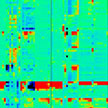 On September 15-16, 2014, come explore ways in which Alternative Testing Strategies (ATS) may be combined to create a Weight of Evidence (WOE) or 'multiple models' approach to inform context-specific decisions about risk from exposure to novel nanoscale materials. The goal is to advance a common understanding of the state of the science, early lessons, current opportunities, and next steps for developing ATS for use in decision making for nanoscale materials.
On September 15-16, 2014, come explore ways in which Alternative Testing Strategies (ATS) may be combined to create a Weight of Evidence (WOE) or 'multiple models' approach to inform context-specific decisions about risk from exposure to novel nanoscale materials. The goal is to advance a common understanding of the state of the science, early lessons, current opportunities, and next steps for developing ATS for use in decision making for nanoscale materials.
Jul 9th, 2014
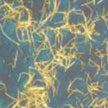 Many nanofabrication techniques depend on creating a structure on one substrate and then transferring it via various processes onto another, desired, substrate. Often, these methods are not generally applicable as they suffer from the process-specific drawbacks, such as for instance intolerance of transferred nanostructures to chemical etchant, and the harsh thermal environment needed. A novel universal and rapid method allows transferring nanostructures with various dimensions onto diverse substrates with high fidelity.
Many nanofabrication techniques depend on creating a structure on one substrate and then transferring it via various processes onto another, desired, substrate. Often, these methods are not generally applicable as they suffer from the process-specific drawbacks, such as for instance intolerance of transferred nanostructures to chemical etchant, and the harsh thermal environment needed. A novel universal and rapid method allows transferring nanostructures with various dimensions onto diverse substrates with high fidelity.
Jul 8th, 2014
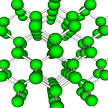 Thermoelectric materials hold great promise for turning waste heat back into useful power and are touted for use in hybrid cars, new and efficient refrigerators, and other cooling or heating applications. But they have one big drawback: they are very inefficient. Since thermoelectric devices work by maintaining a temperature difference between their different sides, it is important that the used materials have low conductivity, i.e. are good thermal insulators.
Thermoelectric materials hold great promise for turning waste heat back into useful power and are touted for use in hybrid cars, new and efficient refrigerators, and other cooling or heating applications. But they have one big drawback: they are very inefficient. Since thermoelectric devices work by maintaining a temperature difference between their different sides, it is important that the used materials have low conductivity, i.e. are good thermal insulators.
Jul 7th, 2014
 Defined as a clouding of the lens of the eye, cataracts affect more than 20 million people worldwide and accounts for 51 per cent of world blindness. In fact, this debilitating eye disease has been identified as the leading cause of blindness today. A multidisciplinary team of researchers is busy trying to understand the fundamental mechanisms of how the aggregates that cause cataracts form, and how nanotechnology may be used to prevent or at least inhibit them.
Defined as a clouding of the lens of the eye, cataracts affect more than 20 million people worldwide and accounts for 51 per cent of world blindness. In fact, this debilitating eye disease has been identified as the leading cause of blindness today. A multidisciplinary team of researchers is busy trying to understand the fundamental mechanisms of how the aggregates that cause cataracts form, and how nanotechnology may be used to prevent or at least inhibit them.
Jul 4th, 2014
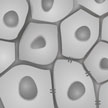 Cellular functions within living organisms are extremely complex processes and researchers have been using nanopatterned substrates to control and monitor cellular functions in order to design and fabricate nanoscale biotechnological systems. Especially stem cell research has benefitted from nanopatterned surfaces. Nevertheless, despite the intense scientific efforts to achieve precise control of stem cell fates with engineered nanopatterned substrates, reliable and cost effective control of stem cell behavior remains a challenge. Researchers have now fabricated biomimetic substrates that are similar to that of the native extracellular matrix in the epidermis which assists proliferation, differentiation, and biosynthesis of the keratinocyte (i.e. human outer skin) cells.
Cellular functions within living organisms are extremely complex processes and researchers have been using nanopatterned substrates to control and monitor cellular functions in order to design and fabricate nanoscale biotechnological systems. Especially stem cell research has benefitted from nanopatterned surfaces. Nevertheless, despite the intense scientific efforts to achieve precise control of stem cell fates with engineered nanopatterned substrates, reliable and cost effective control of stem cell behavior remains a challenge. Researchers have now fabricated biomimetic substrates that are similar to that of the native extracellular matrix in the epidermis which assists proliferation, differentiation, and biosynthesis of the keratinocyte (i.e. human outer skin) cells.
Jul 3rd, 2014
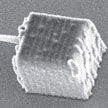 The microstructures of carbon nanotube assemblies determine their properties, for example, highly graphitized CNTs exhibit excellent mechanical and electrical properties; while CNTs with defects and poor crystallinity are beneficial for research on field emission property and hydrogen storage capacity. Therefore, it is of vital importance to control the CNT microstructures effectively for desired applications. A new technique can solve a problem of three-dimensional orientation control of CNTs in microscopic scale.
The microstructures of carbon nanotube assemblies determine their properties, for example, highly graphitized CNTs exhibit excellent mechanical and electrical properties; while CNTs with defects and poor crystallinity are beneficial for research on field emission property and hydrogen storage capacity. Therefore, it is of vital importance to control the CNT microstructures effectively for desired applications. A new technique can solve a problem of three-dimensional orientation control of CNTs in microscopic scale.
Jun 30th, 2014
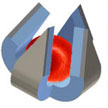 There are a wide range of passive devices such as beads, wells and tubes that can be used to capture and confine single cells. Previous active cell grippers with moving parts have relied on electrical modalities which can be challenging to implement off-chip and in a highly parallel manner. Researchers have now, for the first time, demonstrated an untethered active microgripper that can be used to capture and contain single cells.
There are a wide range of passive devices such as beads, wells and tubes that can be used to capture and confine single cells. Previous active cell grippers with moving parts have relied on electrical modalities which can be challenging to implement off-chip and in a highly parallel manner. Researchers have now, for the first time, demonstrated an untethered active microgripper that can be used to capture and contain single cells.
Jun 25th, 2014
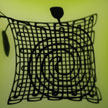 A significant challenge in soft robotics involves fabricating soft sensors and actuators which, so far, have been very tedious to produce. Building soft sensors used by roboticists usually requires a multi-step, manual molding-lamination-sealing-infilling process. As a result, the design and fabrication process is cumbersome; the sensor form factors are unnecessarily limited; and there are issues with mechanical robustness. Now, though, researchers have demonstrated a new method for creating highly stretchable sensors based on embedded 3D printing of a carbon-based resistive ink within an elastomeric matrix.
A significant challenge in soft robotics involves fabricating soft sensors and actuators which, so far, have been very tedious to produce. Building soft sensors used by roboticists usually requires a multi-step, manual molding-lamination-sealing-infilling process. As a result, the design and fabrication process is cumbersome; the sensor form factors are unnecessarily limited; and there are issues with mechanical robustness. Now, though, researchers have demonstrated a new method for creating highly stretchable sensors based on embedded 3D printing of a carbon-based resistive ink within an elastomeric matrix.
Jun 24th, 2014
 On September 15-16, 2014, come explore ways in which Alternative Testing Strategies (ATS) may be combined to create a Weight of Evidence (WOE) or 'multiple models' approach to inform context-specific decisions about risk from exposure to novel nanoscale materials. The goal is to advance a common understanding of the state of the science, early lessons, current opportunities, and next steps for developing ATS for use in decision making for nanoscale materials.
On September 15-16, 2014, come explore ways in which Alternative Testing Strategies (ATS) may be combined to create a Weight of Evidence (WOE) or 'multiple models' approach to inform context-specific decisions about risk from exposure to novel nanoscale materials. The goal is to advance a common understanding of the state of the science, early lessons, current opportunities, and next steps for developing ATS for use in decision making for nanoscale materials.
 Subscribe to our Nanotechnology Spotlight feed
Subscribe to our Nanotechnology Spotlight feed





